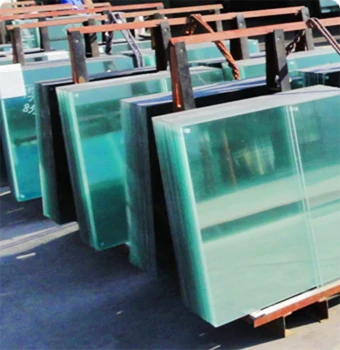Understanding Obscure Glazing Types A Comprehensive Guide
Obscure glazing types have gained significant popularity in modern architecture, providing both aesthetic benefits and practical solutions. This article delves into the various types of obscure glazing, their applications, benefits, and considerations for both residential and commercial spaces.
What is Obscure Glazing?
Obscure glazing, often referred to as privacy glass or translucent glass, is a type of glass designed to limit visibility while allowing natural light to penetrate. This characteristic makes it an excellent choice for spaces where privacy is paramount, without sacrificing illumination. Obscure glazing can be produced through various methods such as acid etching, sandblasting, or through the use of films that adhere to the glass surface.
Types of Obscure Glazing
1. Frosted Glass One of the most common types of obscure glazing, frosted glass is created by sandblasting or acid etching clear glass. This method provides a semi-translucent finish that diffuses light while obscuring shapes and silhouettes. Frosted glass is frequently used in bathroom windows, shower doors, and office partitions.
2. Textured Glass Textured glass features patterns or designs that create a unique appearance while enhancing privacy. It can come in numerous styles, from rippled surfaces to geometric patterns. Textured glass is often used in decorative applications, such as cabinet doors, room dividers, and facades.
3. Tinted Glass While primarily used for reducing glare and heat gain, tinted glass can also obscure visibility. The degree of obscurity depends on the tinting level. Tinted glass is commonly applied in commercial buildings and vehicles, where privacy and glare reduction are necessary.
4. Patterned Glass This type of glass incorporates decorative patterns that are applied during the manufacturing process. The patterns can be customized to create unique designs, making it an appealing option for architects looking to enhance the visual interest of a building while maintaining privacy.
5. Smart Glass An innovative option, smart glass, can change its opacity in response to electrical stimuli. This technology allows for dynamic control of light and privacy, making it ideal for high-end residential applications and futuristic office buildings. Smart glass can switch from transparent to opaque, providing both versatility and energy efficiency.
obscure glazing types
Benefits of Obscure Glazing
1. Enhanced Privacy The primary advantage of obscure glazing is the level of privacy it offers. It prevents outside observers from seeing into a space, making it perfect for bathrooms, offices, and private areas.
2. Natural Light Penetration Despite its obscurity, this type of glazing allows natural light to filter through, reducing the reliance on artificial lighting. This can lead to energy savings and a more pleasant atmosphere.
3. Aesthetic Appeal Obscure glazing can add a unique touch to the architectural design of a building. With various styles available, it can be tailored to suit individual tastes and property aesthetics.
4. UV Protection Many types of obscure glass offer UV protection, helping to reduce the fading of furniture and artwork caused by prolonged sun exposure.
5. Safety and Security Obscure glazing can deter would-be intruders by limiting visibility into private spaces.
Considerations
While obscure glazing provides numerous benefits, there are considerations to keep in mind. The choice of obscure glazing should align with the specific needs of a space, and considerations around cost, installation, and maintenance are crucial. It's also essential to ensure compliance with local building codes and regulations regarding light transmission and energy efficiency.
Conclusion
Obscure glazing types play a critical role in contemporary design, marrying privacy with the influx of natural light. By understanding the various types and their applications, homeowners and architects can make informed decisions that enhance the functionality and beauty of their spaces. As architectural designs continue to evolve, the popularity of obscure glazing is likely to expand, further integrating it into the fabric of modern living. Whether for residential or commercial purposes, choosing the right type of obscure glazing can significantly impact the overall aesthetic and functionality of a space.
 Afrikaans
Afrikaans  Albanian
Albanian  Amharic
Amharic  Arabic
Arabic  Armenian
Armenian  Azerbaijani
Azerbaijani  Basque
Basque  Belarusian
Belarusian  Bengali
Bengali  Bosnian
Bosnian  Bulgarian
Bulgarian  Catalan
Catalan  Cebuano
Cebuano  Corsican
Corsican  Croatian
Croatian  Czech
Czech  Danish
Danish  Dutch
Dutch  English
English  Esperanto
Esperanto  Estonian
Estonian  Finnish
Finnish  French
French  Frisian
Frisian  Galician
Galician  Georgian
Georgian  German
German  Greek
Greek  Gujarati
Gujarati  Haitian Creole
Haitian Creole  hausa
hausa  hawaiian
hawaiian  Hebrew
Hebrew  Hindi
Hindi  Miao
Miao  Hungarian
Hungarian  Icelandic
Icelandic  igbo
igbo  Indonesian
Indonesian  irish
irish  Italian
Italian  Japanese
Japanese  Javanese
Javanese  Kannada
Kannada  kazakh
kazakh  Khmer
Khmer  Rwandese
Rwandese  Korean
Korean  Kurdish
Kurdish  Kyrgyz
Kyrgyz  Lao
Lao  Latin
Latin  Latvian
Latvian  Lithuanian
Lithuanian  Luxembourgish
Luxembourgish  Macedonian
Macedonian  Malgashi
Malgashi  Malay
Malay  Malayalam
Malayalam  Maltese
Maltese  Maori
Maori  Marathi
Marathi  Mongolian
Mongolian  Myanmar
Myanmar  Nepali
Nepali  Norwegian
Norwegian  Norwegian
Norwegian  Occitan
Occitan  Pashto
Pashto  Persian
Persian  Polish
Polish  Portuguese
Portuguese  Punjabi
Punjabi  Romanian
Romanian  Russian
Russian  Samoan
Samoan  Scottish Gaelic
Scottish Gaelic  Serbian
Serbian  Sesotho
Sesotho  Shona
Shona  Sindhi
Sindhi  Sinhala
Sinhala  Slovak
Slovak  Slovenian
Slovenian  Somali
Somali  Spanish
Spanish  Sundanese
Sundanese  Swahili
Swahili  Swedish
Swedish  Tagalog
Tagalog  Tajik
Tajik  Tamil
Tamil  Tatar
Tatar  Telugu
Telugu  Thai
Thai  Turkish
Turkish  Turkmen
Turkmen  Ukrainian
Ukrainian  Urdu
Urdu  Uighur
Uighur  Uzbek
Uzbek  Vietnamese
Vietnamese  Welsh
Welsh  Bantu
Bantu  Yiddish
Yiddish  Yoruba
Yoruba  Zulu
Zulu 

